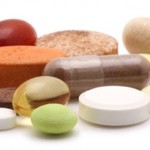Blog Entry #111
By Anthoney J. Andersen – Steroidal.com
More fiber. More fiber. More fiber.
You’ve probably heard this important little medical tidbit at least once in your life. But do you know why fiber is such an important commodity to add to your daily diet?
Follow me down the rabbit hole as we dive into the world of dietary fiber.
THE SOURCE AND ALL ITS WONDERS
Dietary fiber – also known as roughage or bulk – is comprised of all parts of plant foods that the human body can’t digest or absorb. Unlike other essential nutrients, such as fats, proteins and carbohydrates – which your body breaks down and absorbs – fiber isn’t digested by your body, according to MayoClinic.com.
Instead, the fiber – still relatively intact – passes through your stomach, small intestine, and colon, before being dispensed out of your body.
According to the American Diabetes Association, fiber is broken down into two types: soluble and insoluble.
- Soluble fiber: This type dissolves in water to form a “gel-like” material. When in this state, the fiber can help to lower cholesterol and glucose levels. Soluble fiber can be found in such foods as oats, peas, beans apples, citrus fruits and carrots.
- Insoluble fiber: This type of fiber aids in the transportation of material through your digestive system and increases build up of stool, so it can be very beneficial to individuals who struggle with constipation. Insoluble fiber can be found in whole-wheat flour, wheat bran, nuts, beans, green beans and potatoes.
“Fiber plays an important role in long-term health,” says Dr. Arthur Agatston, preventive cardiologist and author of the best-selling book South Beach Diet.
According to Dr. Agatston, Americans only consume between 12 to 17 grams per day when they should be consuming 25 to 30 grams per day.
BENEFITS OF A HIGH-FIBER DIET
A high-fiber diet contains many health benefits, which include:
- Helps maintain bowel health: Consuming the daily-recommended amount of fiber (25 to 30 grams) can decrease your chances of developing hemorrhoids and small pouches in your colon.
- Helps maintain a healthy weight: High-fiber foods tend to require more chewing time which gives your body – as well as your brain – time to register when you’re no longer hungry, so you’re less likely to overeat, according to MedlinePlus.gov. Also, high-fiber diets tend to have fewer calories for the same amount of volume as other food.
- Helps control glucose levels: In people with diabetes, high-fiber diets – particularly those containing soluble fiber – can help decrease the absorption of sugar and help improve blood sugar levels.
HOW MUCH IS ENOUGH
The question on everyone’s mind is “how much fiber does my body need to be healthy?” The daily recommended dosage for healthy adults is 25 to 30 grams. But that dosage varies by age and gender.
The Institute of Medicine provides this breakdown for the daily recommendations for adults:
| Age 50 or younger | Age 51 or older | |
| Men | 38 grams | 30 grams |
| Women | 25 grams | 21 grams |
THE WRAP UP
If you’re one of the many Americans who need to increase their daily fiber intake, do so by eating more beans, vegetables, fruits, and whole grain breads and cereals several times a week to start.
This gradual increase will help minimize some of the side effects of fiber, such as intestinal gas.
Think of your body like a well-oiled machine: the better you take care of it, the smoother it will function.







